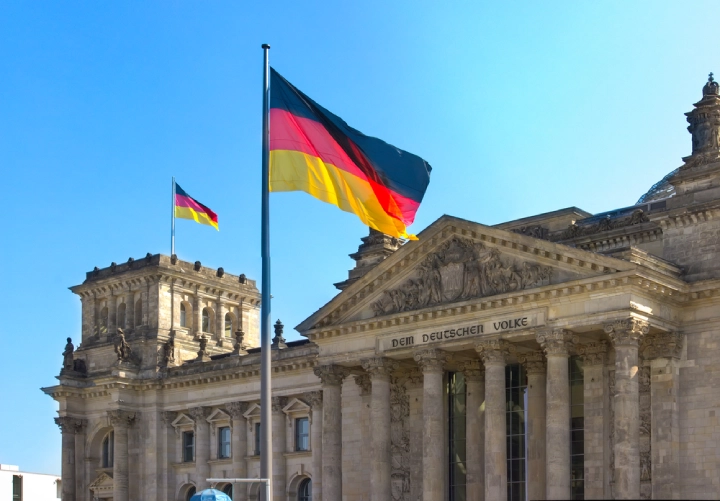
The development of cities in Germany depended a lot on the conflicts the country has seen throughout its history. When Germany was split into two acronyms – the FDR, or West Germany, and DDR/GDR, East Germany – the capital played a key role. During the 20th century battles of rhetoric and ideology, Berlin was left behind in terms of developments, while other capitals like Paris and London were booming.

However, the last census in 2021 showed that 83.2 million people live in Germany today, 3.25 million of which live in its booming capital, Berlin, which is also Germany’s biggest city. Even if its history has not been the smoothest, Berlin is now the cultural and historical hub of the country.
Germany’s largest cities by population
Sticking to individual official cities in Germany – a clarification that will become very important – it stands a fair way ahead of its nearest rival.
But relative to the way Paris and London absolutely dwarf all other cities in their respective countries, Germany actually has a relatively good selection of moderately large towns.
Here’s the top ten, in terms of official city populations (millions of people), according to our sister site, Investment Monitor:
- Berlin – 3.52 million
- Hamburg – 1.79 million
- München (Munich) – 1.45 million
- Köln (Cologne) – 1.06 million
- Frankfurt – 733,000
- Stuttgart – 625,000
- Düsseldorf – 610,000
- Dortmund – 585,000
- Essen – 583,000
- Leipzig – 560,000
Germany’s largest cities by urban area
Official government boundaries are not the only way of defining cities in Germany. Indeed, when it comes to comparing cities in Germany, and one has boundaries that are much more expansive than another, it can be pretty misleading at times.
A more solid way of defining things is to, basically, draw a line around an urban area and call it a city. An area can be considered urban if it counts more than 500,000 people, and it “functions as an integrated economic unit, linked together by commuting flows, social and economic interactions”.
That’s essentially what the US consultancy Demographia does every year in its World Urban Areas report. Here is the top ten from 2022:
- Essen-Düsseldorf – 6.237 million
- Berlin – 4.012 million
- Cologne-Bonn – 2.161 million
- Munich – 2.038 million
- Hamburg – 2.019 million
- Frankfurt – 2.002 million
- Stuttgart – 1.374 million
- Dresden – 781,000
- Hannover – 689,000
- Nuremberg – 657,000
Suddenly Berlin has lost the top spot to Essen-Dusseldorf, a conurbation several dozen kilometres across on the shores of the Rhine. Whether that’s a single city or not is a different question.
While we’re here, note, too, that the gap between the largest urban areas and those ranking third to sixth is relatively narrow. Compare that to the UK, where London’s ten million or so people completely dwarf the under three million in Birmingham and Manchester.
Cities by metropolitan area
There’s one more way we can define cities in Germany: by their metropolitan area, that is, the entire economic footprint of a city including its suburbs and commuter towns.
The German government, helpfully, does all that for us: its metropolitan areas are collections of local authorities which have signed treaties to cooperate in certain areas. Many of these regions cross state boundaries: Hamburg, for instance, is a city-state; but its metropolitan region also includes eight districts in Lower Saxony, six in Schleswig-Holstein, and two Mecklenburg-Vorpommern.
Judge city size on this basis, and the top ten look like this:
- Rhine-Ruhr metropolitan region (includes Essen, Dusseldorf, Cologne and Bonn) – 10.680 million
- Berlin/Brandenburg metropolitan region – 6.144 million
- Munich metropolitan region – 5.991 million
- Frankfurt Rhine-Main metropolitan region – 5.808 million
- Stuttgart metropolitan region – 5.30 million
- Hamburg metropolitan region – 5.10 million
- Hannover–Braunschweig–Göttingen–Wolfsburg metropolitan region – 3.90 million
- Nuremberg metropolitan region – 3.50 million
- Central German metropolitan region (basically Leipzig and Dresden) – 2.40 million
- Rhine–Neckar metropolitan region (mostly Mannheim and Heidelberg) – 2.362 million
Once again the striking thing here is how flat these figures are. Sure, the polycentric Rhine-Ruhr region is enormous, on a par with London or Paris – but beyond that, there are another six cities in Germany of around half its size or smaller.
[Read more: Where are the largest cities in the US?]






